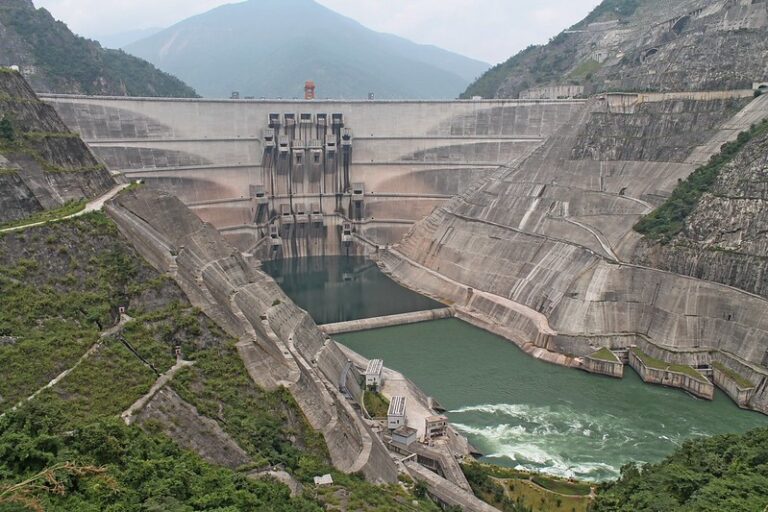Can Climate Cooperation Buck the Downward Trend in China-EU Relations?

This article is part of a series of articles authored by young, aspiring China scholars under the Future CHOICE initiative.
Despite current EU-China tensions, not all areas of cooperation are facing a decline: the EU and China have engaged in long-standing cooperation on climate change and continue to reaffirm their commitment to do so. Thus, climate cooperation holds great potential as a basis for the continuation of EU-China collaboration even in the current tense context.
Mapping EU-China Climate Cooperation
EU-China climate cooperation first emerged along with the UN climate regime and has since developed into a complex action-oriented partnership. In the 1990s, China supported the strict application of the common but differentiated responsibilities principle, while the EU called for developing country commitments. Rising tensions were kept at bay by focusing on securing the entry into force of the Kyoto Protocol post-US withdrawal.
The EU and China’s positions converged during pre-Copenhagen negotiations: the EU Emissions Trading System (ETS) led to cooperation between China and the Union, rather than its Member States. Tensions arose again towards the end of the negotiations when the EU responded to criticism of its ETS by banning credits from non-LDC (least developed countries) projects starting in 2013. This decision effectively excluded any new Chinese projects.
Nonetheless, China found itself willing to accept an EU-proposed agreement with binding targets for all emitters during the Durban negotiations, to alleviate reputational damage incurred at Copenhagen. This allowed for considerable evolution of EU-China climate cooperation, a fundamental step for the success of the Paris Agreement.
The US withdrawal allowed the EU and China to fill the resulting vacuum and readjust their roles, boosting collaboration. In the 2018 EU-China Leader’s Statement, the EU and China communicated that they understood their roles as responsible and cooperative players, perhaps in contrast to the US and its retreat from international climate cooperation under the Trump administration. EU-China climate relations have thus transcended the original boundaries and now aim to shape global climate policies.
Basis for a Long-Standing Partnership?
EU-China climate collaboration follows a clear trend of increased cooperation. This is likely to continue based on the alignment of interests, policies, and citizen support of both actors. Both sides share a perceived vulnerability to climate change impacts, and concerns for energy security, and see the domestic perception of climate change as a priority. The EU also has a history of leading by example in climate change mitigation, while China has embarked on a political shift towards slower but more sustainable growth and aims to increase its international prestige through a more proactive foreign policy. Climate collaboration can therefore be expected to remain secure enough to underpin stable and lasting EU-China relations. To this end, pre-existing links between climate policy and other policy areas should be used to foster cooperation beyond climate.
Regarding security, both actors recognize climate change as a non-traditional threat. The European Commission was among the first actors worldwide to identify climate change as a security issue, and China faces grave environmental security risks that climate change will only aggravate, such as rising sea levels and water scarcity. Joint projects to address climate-related security risks are already underway. Both actors use traditional security resources for climate-related issues, such as employing military troops for the prevention and relief of climate-linked natural disasters. For example, the People’s Liberation Army is also involved in climate mitigation by planting trees. Furthermore, China and the EU combined represent approximately a third of global fossil fuel consumption but are highly dependent on imported energy sources. This creates a common interest not only in the pursuit of energy security but also of renewable energy sources, as underlined in the EU-China Roadmap on Energy Cooperation. These shared interests in energy and climate security are enough to warrant further cooperation.
The Comprehensive Agreement on Investment (CAI), an ambitious bilateral agreement covering diverse areas including market access, dispute settlement, and fair competition, also linked climate to EU-China economic relations by incorporating sustainable development principles, including effective Chinese implementation of the Paris Agreement (Section IV, Art. 6a.). Despite freezing the CAI, the link persists through extensive cooperation in emissions trading. China makes considerable use of the EU ETS, and the EU has supported the launch of China’s own national ETS. Such mechanisms also incentivize emissions mitigation in other areas linked to trade across the private sector, such as the transport of goods across globalized production chains, the extraction of fossil fuels, or the supply of key forest risk commodities, such as cattle, soy, or palm oil. Cooperation between the two systems will aid ETS system implementation around the world, again positioning the EU and China as climate co-leaders. There is also further trailblazing potential for the EU and China ETS systems in that there is interest on both sides in linking them together. Although smaller instances of such links have already taken place, such as between the Canadian provinces of Québec, Ontario, and Manitoba and the state of California in the US, it has never been done on a scale such as an EU-China ETS link would imply.
Climate has impacted Chinese and EU foreign aid too. The EU has sent aid to China for many years, to the tune of over €12.5 billion in the last 15 years, with a clear majority of the funds destined for environment-related goals, such as Sustainable Development Goals 11 through 13. The EU-China 2020 Strategic Agenda for Cooperation shows a shift to cooperation as co-donors for natural disaster relief, in particular since the creation of China’s International Development Cooperation Agency (CIDCA). The Strategic Agenda lists among its peace and security targets the aim to “intensify co-operation with a view to promoting and facilitating the delivery of humanitarian aid.” Natural disaster risk reduction, in particular, is one of the 2020-2024 strategic priorities for the EU Directorate-General for European Civil Protection and Humanitarian Aid Operations (DG ECHO), and China has built up significant expertise in the area, in the light of the increase of domestic emergencies it faces due to climate change. Climate cooperation could serve as a starting point to encourage knowledge exchange on this subject, which could, in turn, open the door to further cooperation.
Potential of Positive Spillover
In the short term, EU-China relations hinge on changes that could allow for the incorporation of climate change cooperation as foundations for future relations. In China, Xi Jinping is expected to take an assertive approach to “controlling narratives and countering criticism of CCP rule abroad” after the 20th Congress of the CCP. China’s pursuit of global climate leadership is at least partially motivated by reputation concerns. As the 14th Five Year Plan also emphasizes international collaboration and Chinese authorities have already openly linked climate cooperation to other aspects of its bilateral relationships with actors such as the US, China is likely to pursue further climate leadership and collaboration with the EU and its member states.
In Europe, the new German government, led by Olaf Scholz, has yet to unify the divergent views of the Ampelkoalition members regarding China. Nonetheless, the presence of the Green Party in the ruling coalition ensures that climate cooperation with China will be addressed: its 2021 election program underlines joint efforts with China against climate change in particular, even though the party has adopted China-skeptical policies in other areas. Germany has also been promoting climate response as a top priority for the G7.
Additionally, China continues to pursue the greening of its flagship foreign policy instrument, the Belt and Road Initiative (BRI). Given the geopolitical turbulence the BRI encounters at various points of its path, it is encouraging to see that China has not slowed down its efforts to perfect an environmental framework for its outbound investments. On March 28, the Chinese government published the Opinions on the Joint Implementation of Green Development in the BRI, which reaffirms numerous environmental commitments in relation to the BRI, including full implementation of the Paris Agreement.
Despite its newly-coined Global Gateway, perceived as an alternative to the BRI, the EU is also involved in greening the BRI, agreeing to “forge synergies between China’s Belt and Road Initiative and the EU strategy on Connecting Europe and Asia, as well as the EU Trans-European Transport Networks” in their joint statement after the April 2019 China-EU Summit. Members of European institutions have also raised the alarm regarding the environmental impact of Chinese industrial projects in the Western Balkans. EU interest in this region and the ongoing accession processes has recently been invigorated in the wake of the Russian invasion of Ukraine, and fulfillment of the environmental chapter of the Acquis Communautaire will require EU-China interaction regarding local environmental issues.
A further aspect calling for open environmental dialogue between the EU and China is the Carbon Border Adjustment Mechanism (CBAM), a key element of the EU’s current climate policies. Although the EU has reiterated that the mechanism’s impact on trade with China will be limited and will not last, there is a concern regarding the unilateral nature of the introduction of the mechanism. Nonetheless, holding open dialogue on the CBAM would go a long way toward alleviating China’s misgivings.
Given the evolution of EU-China climate cooperation, its links with cooperation in other policy areas, and the spaces for continued climate collaboration provided by recent developments, joint climate efforts have clear potential as a foundation for long-lasting EU-China relations. The results of the EU-China summit held on April 1 further confirm this potential, as the climate was among the few topics on which both sides saw eye to eye. The question then becomes: can climate cooperation remain the sole area of positive development in the long term despite the tensions in other areas of EU-China relations?
As both parties decarbonize their economies, they will face a similar set of challenges that cooperation could help overcome, but they will also be competing for leadership in strategic low-carbon sectors. Nonetheless, it remains in their interests to balance cooperation and competition, as the vulnerability to climate change of their populations necessitates climate engagement between the two. Thus, climate cooperation will inevitably continue forward. However, it will also increasingly intersect with geopolitical and geoeconomics issues, such as technology or trade, making it impossible to isolate from the tensions that dominate EU-China relations.
If, rather than let these intersections slow down climate action, both parties acknowledge the urgency of climate issues and use this argument to increase the speed at which the solution to other areas of contention is pursued, climate cooperation could indeed go from the sole positive area in EU-China relations to the cause for lessened tensions elsewhere. The EU-China high-level dialogue on environment and climate, which will convene before next summer, could be an ideal starting point to set a conciliatory tone, rather than a confrontational one, for the future of EU-China relations.
Written by
Blanca Marabini San Martín
BlancaMSMBlanca Marabini San Martín is a PhD student at the Centre for East Asian Studies of the Madrid Autonomous University (CEAO – UAM), in Spain, as well as part of the China Horizons Research Consortium. She has collaborated with the International Institute for Asian Studies (IIAS, Leiden), the Spanish Institute for Strategic Studies (Ministry of Defense of Spain), and the Spanish Chinese Policy Observatory. Her research interests center around the climate, environmental, and green tech dimensions of China’s foreign policy, particularly within the framework of EU-China relations.


